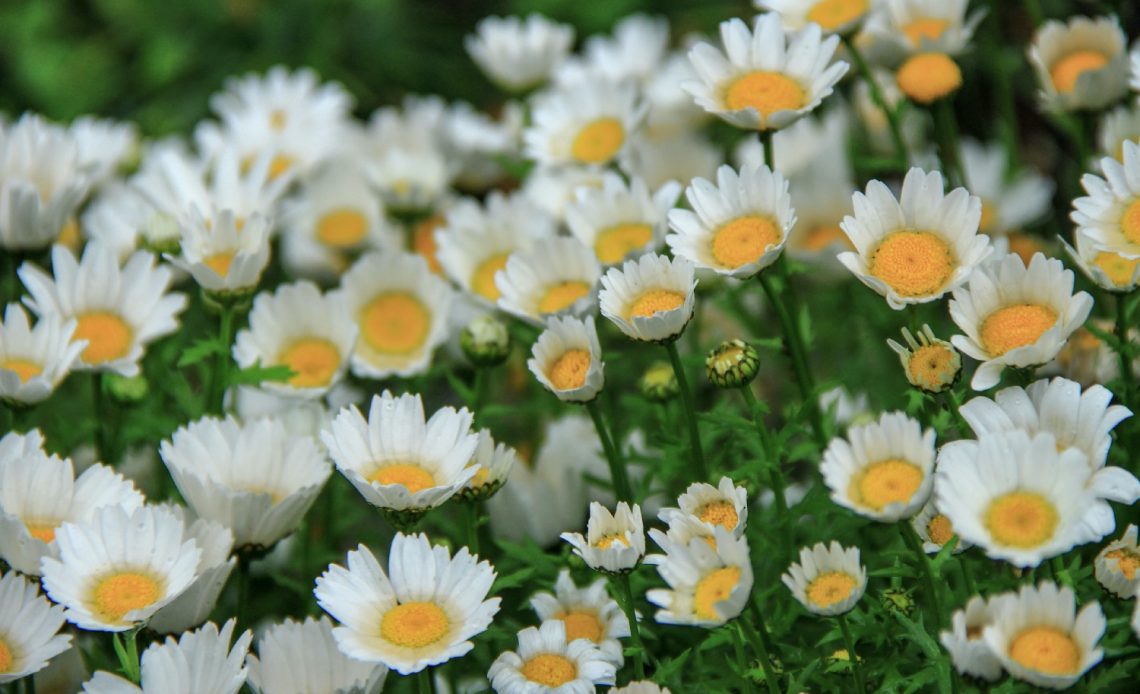

We’re here to help! Wild Yards is a completely free website that is 100% dedicated to helping you create a wildlife-friendly, sustainable yard. Read more
WildYards is reader-supported. When you buy a product through a link on our site, we may earn a comission. Every product is independently selected by our (obsessive) editors and our reviews are unbiased and objective. Read more about our mission or our privacy policy.
Chamomile is a popular herb grown across US gardens thanks to its status as a natural pest controller. It’s relatively easy to maintain, and what’s more, it’s preferred by many vegetable gardeners over harmful chemicals and pesticides. Growing chamomile companion plants could help to strengthen your crops!
Great companion plants for chamomile include cucumber, brassica plants, and even fruit trees. Many vegetables, herbs, and flowers, too, offer mutual benefits when planted alongside them. Take caution – not all plants will benefit from chamomile’s heady scent.
Why growing companion plants with chamomile is a great idea
Chamomile tends to provide more benefits for other plants, herbs, and vegetables than it receives – it has a reputation for being the ‘physician’ of the garden. When harvested, it’s commonly used to make medicinal tea and possesses anti-bacterial and anti-fungal properties. In some cases, chamomile can even act as a mild sedative!
Aesthetically, gardeners choose chamomile for attractive borders – but its benefits extend to more than looks alone. This herb will repel common pests, attract beneficial insect predators, welcome pollinators to your garden and even help to enhance flavors in certain growths.
A plant or vegetable rarely won’t benefit from chamomile’s protection, but some matches simply don’t work. For example, this may be the case if the herb’s oil spoils certain flavors or if chamomile itself gets overwhelmed by competitive growth.
Chamomile naturally ‘injects’ added nutrients into the soil of nearby plants – in particular, this herb will capture and disperse potassium and sulfur to help boost flavor in edible crops.
This herb will proliferate quickly, though it’s not as invasive as growths such as dill, thanks to its shorter roots. Chamomile is also easier to control and slow down – meaning it’s unlikely the herb will take over your plots unless you leave it to run rampant. Trimming and dividing at least twice a year is a must to stop chamomile from overgrowing your other plants.
The best companion plants for your chamomile
As the ‘garden physician’, the following plants largely benefit from chamomile’s presence more so than the other way around. Chamomile tends to avoid most pests, providing it has optimum growing conditions. That said, there are some cases where the benefits are mutual.
Alliums
Allium plants are mutually beneficial friends of chamomile as they protect each other from pests and disease. Alliums include the likes of onion and garlic, and their intense fragrances can help to fight back aphids, which can eat away at chamomile if weakened and unprotected.
In return, chamomile can significantly protect alliums as they can help to prevent these plants from developing fungi and potentially fatal diseases. Planting chamomile alongside alliums will help to provide you with stronger, more flavorsome garlic and onion when it comes time to harvest.
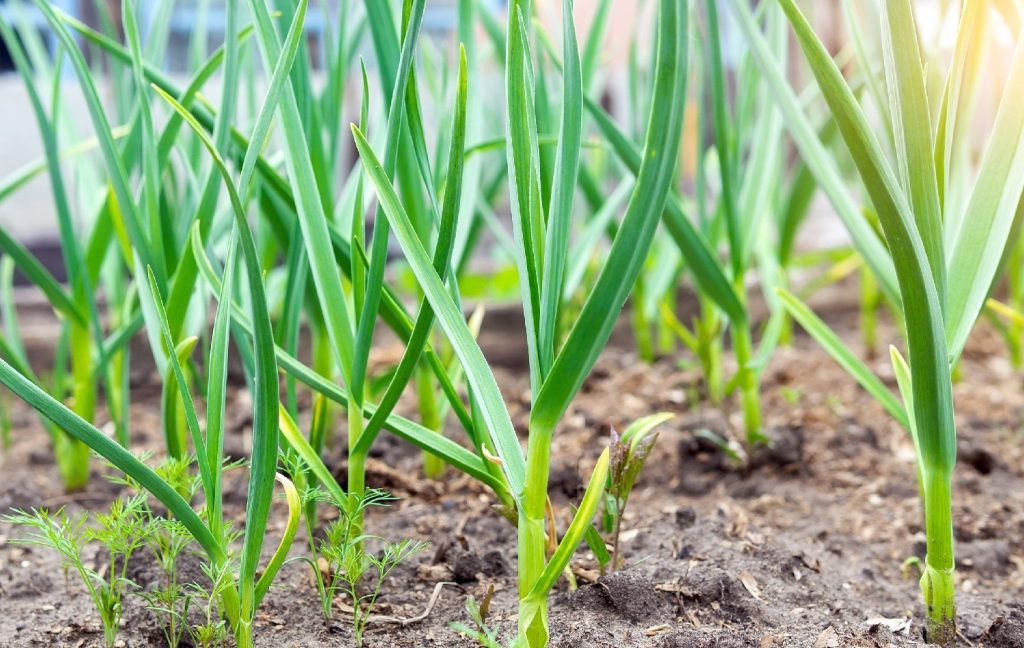
Cucumbers
Planting chamomile close to your cucumber crops will help to enhance the flavor of your pickle crop. Chamomile also helps to welcome predatory insects such as ladybugs, which will take care of the most invasive pests likely to spoil your cucumber harvest.
There’s an additional benefit to keeping cucumbers and chamomile together for your wider garden. To prevent deer from wandering into your yard, chamomile and cucumber work together to confuse visiting foragers. Deer hate plants and vegetables that produce strong fragrances – grow this herb and pickle combo together to deter roving mammals from your tastier crops.
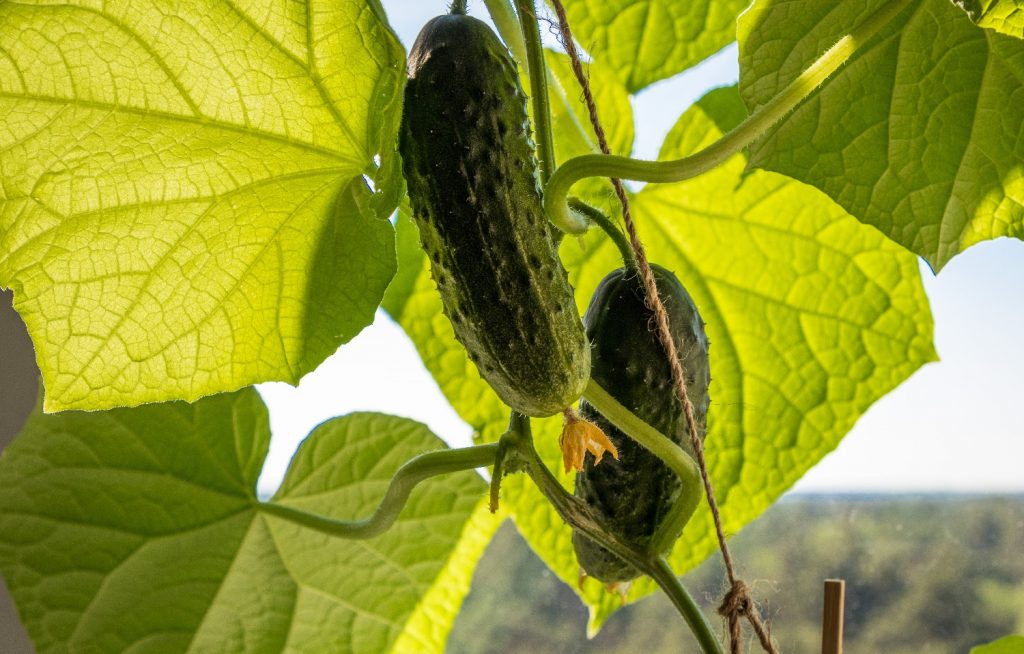
Basil
Basil is a curious companion plant that won’t always befriend other herbs – it has particular growing needs. With chamomile, however, you’re likely to develop a strong clutch of herbs in the same plot, with most benefits arriving at harvest time.
Basil and chamomile complement each other’s flavors thanks to oil and fragrance release. Growing these herbs together to full maturity will produce strong-tasting crops.
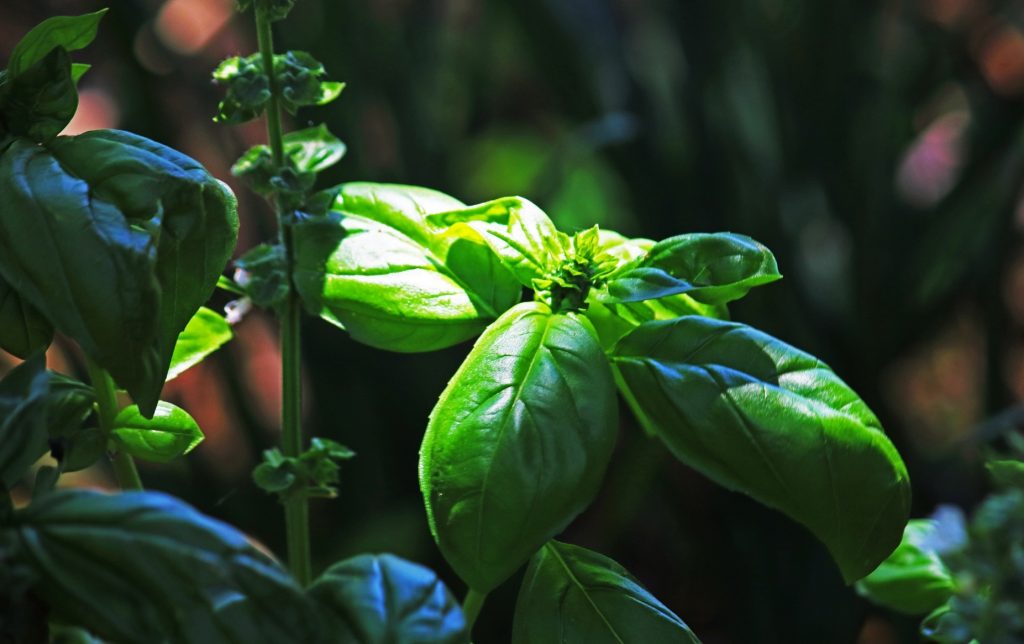
Fruit Trees
Growing fruit trees from scratch will take time, but most fruit will help you to build a strong, pollinator-friendly partnership with chamomile. Chamomile is commonly pollinated by various species of bee and butterfly – combined with trees bearing oranges, apples, or pears, and you’re likely to double the attraction power.
Beyond this, chamomile has immense benefits for many fruit trees’ long-term health. The herb’s anti-fungal properties can help to stave off disease that can rot away at trunks, leading to early death.
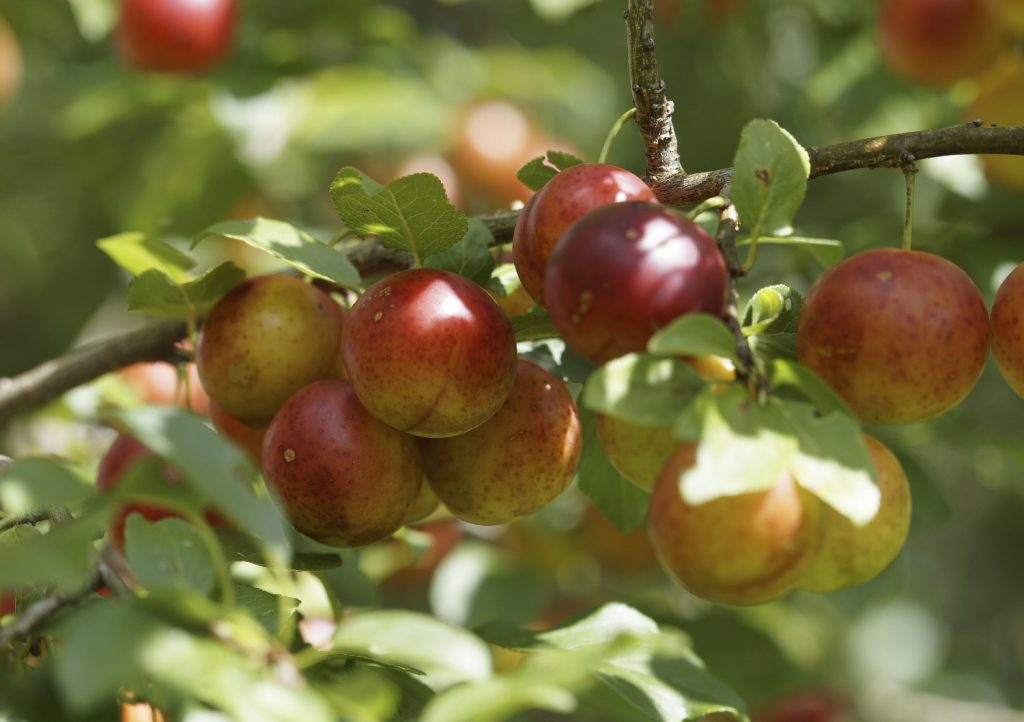
Tomatoes
Tomato plants are highly sensitive and typically need protecting from companion plants – with chamomile helping to fight back against invasive predators. While chamomile can suffer from aphid attacks, healthy herb plots will introduce ladybugs, which will take care of destructive mini beasts likely to cause more damage to tomatoes.
Growing chamomile around tomato plants will help your crops to grow stronger and at a rapid pace! As tomatoes don’t frequently attract pollinators, the herb will also bring in butterflies and bees to help spread your crops further and broader.
Chamomile will offer similar protection for other nightshades such as eggplant – it’ll help to take care of vegetable blight, for example.
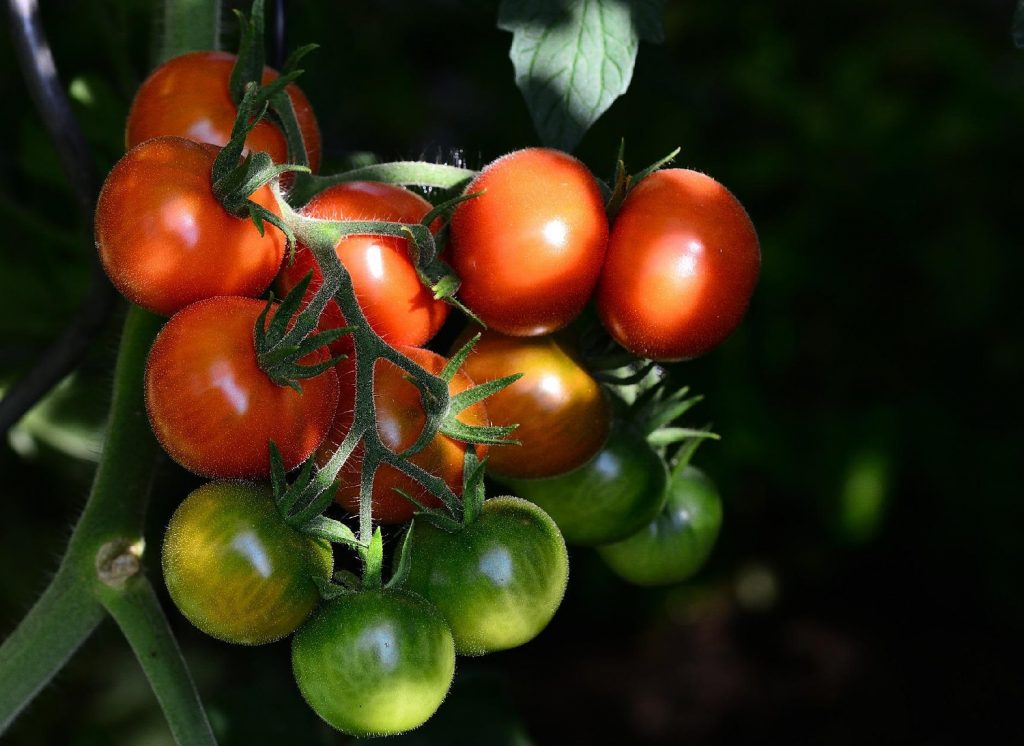
Brassicas
Brassica plants – such as cauliflower, cabbage, and broccoli – are at high risk of predator interest. Chamomile can both deter feasting insects and will welcome predators to help remove destructive invaders. In addition, a strong perimeter of chamomile – or a plot filled in with the herb – may help to prevent deer from entering your yard to eat these vegetables.
In return, brassicas offer lots of useful ground coverage and protect your plots and beds from developing invasive weeds. As these weeds may impact chamomile growth, the benefits of companionship are mutual.
Finally, chamomile can also help to bring out the flavor in broccoli and other brassicas – it’s worth experimenting to taste.
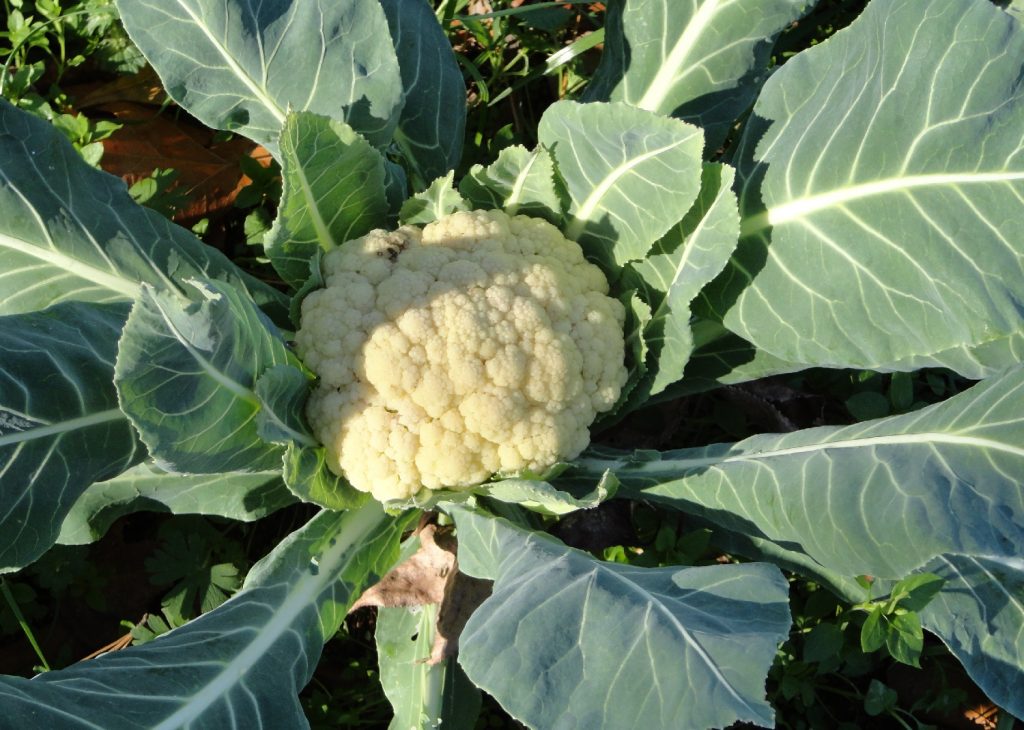
Potatoes
Like tomatoes, potato plants benefit hugely from chamomile partnerships as they can help repel invasive insects. In particular, potatoes are at risk from destructive Colorado beetles. Chamomile plots can help to introduce pest predators and produce scents to ward off confused visitors.
Planting chamomile among your potatoes can also restrict deer visitors, acting as a natural guard. Chamomile’s multi-layered protection will ensure you harvest strong, tasty potatoes free from damage and disease.
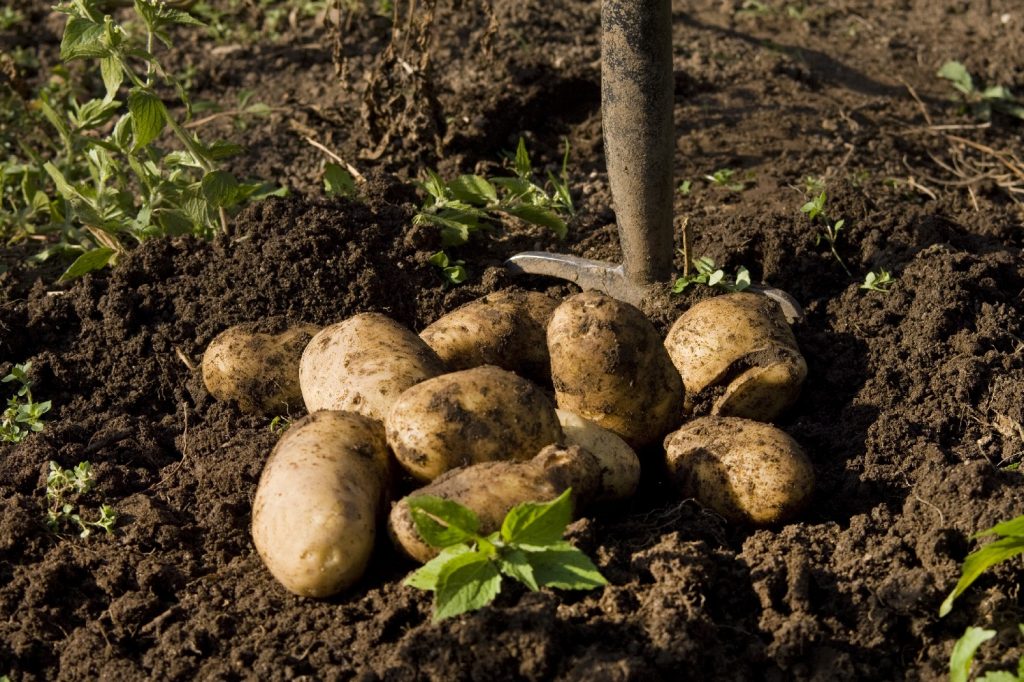
Celery
As well as helping to protect celery from deer and insect interest, chamomile will release healthy chemicals into the soil that can improve growth and even enhance the taste of your crops. This means you can expect to harvest celery faster – without losing flavor or integrity.
It’s advisable to grow chamomile carefully around celery as the herb can overwhelm the vegetable. Be sure to plant one specimen every 150-200 feet if you have a large plot; the benefits will outweigh the potential overgrowth.
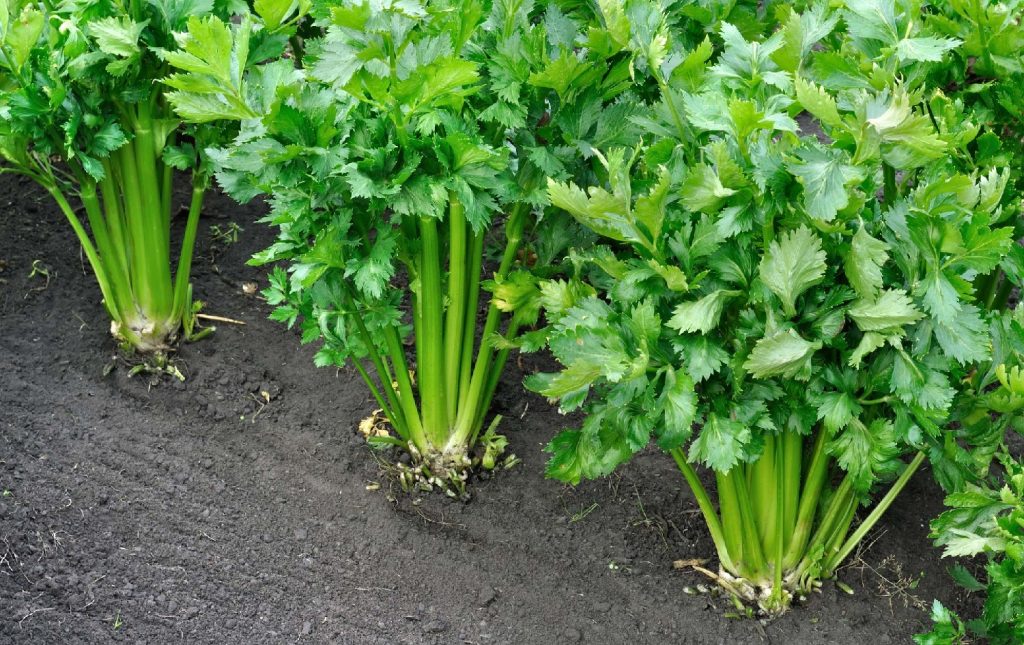
Dill
Dill, like chamomile, is fast-growing and highly resistant to invasive pests. Growing chamomile and dill together will provide a reliable, natural pest control system to protect weaker plants and vegetables in your garden.
The danger of growing dill and chamomile together is that both proliferate very quickly – though when harvesting, you may benefit from stronger flavors in either plant. Chamomile can also help dill to grow stronger and produce more oil than you may expect from the herb on its own.
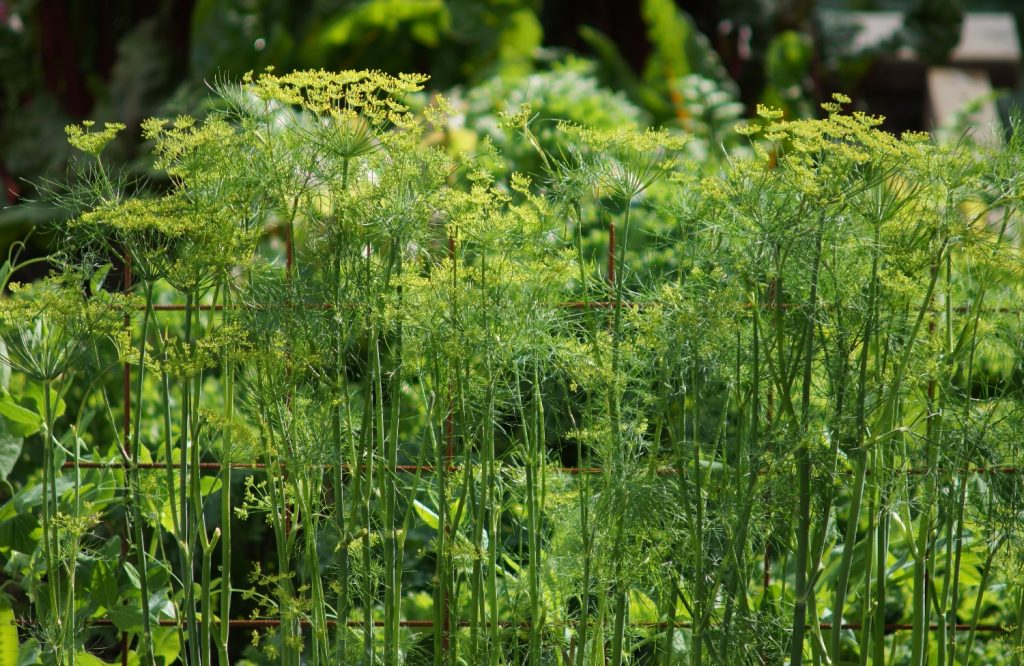
Peas and Beans
Both beans and peas are very easy to grow with little need for maintenance, and chamomile can help to bring out richer flavors in a variety of specimens. It does this by introducing more potassium and sulfur into the growth medium. These added nutrients not only help to strengthen the crop’s taste but can also stimulate the growth of additional fruit.
Growing chamomile amongst beans will help to bring more pollinators (particularly bees) to help your plants grow stronger for longer across the season. Chamomile also brings its pest-controlling prowess to bean and pea crops, specifically introducing predatory wasps to take care of blackfly and aphid invaders.
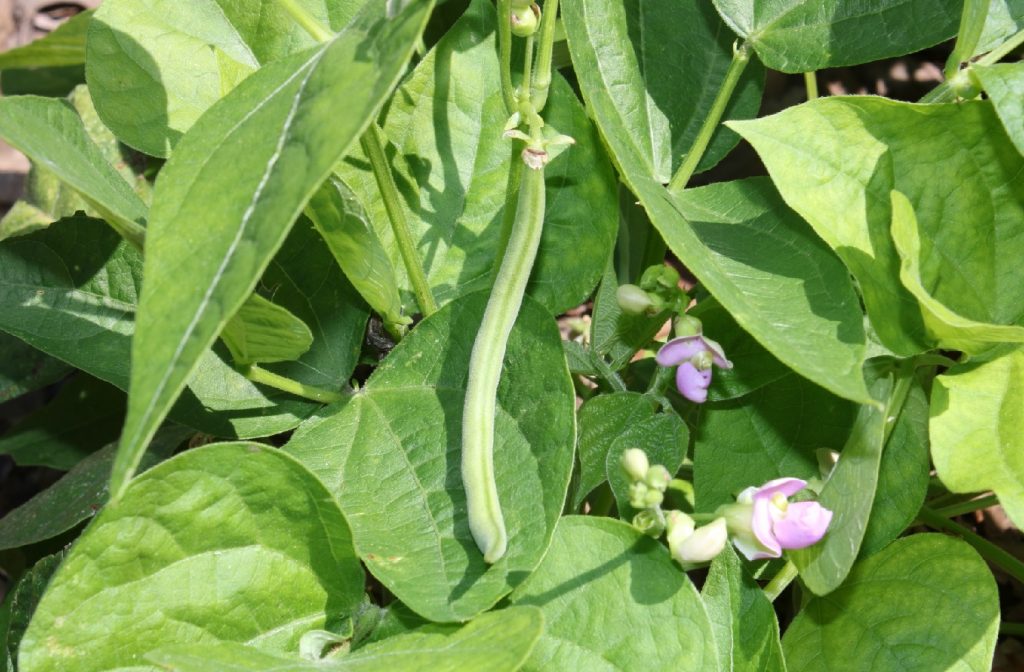
Bee Balm
Chamomile acts as a fantastic friend to many perennial blooms as it can help to boost pollinator appeal. While the bee balm already appeals to hummingbirds, bees, and butterflies, adding chamomile can help to ensure you get double the interest from useful wild visitors.
Chamomile’s protective tendencies and soil nutrient boosts will also help your bee balm to persist for longer, meaning you can welcome pollinators for longer into the season than you’d normally expect. Chamomile will also help to prevent bee balm from developing fungi and disease – it’s particularly susceptible to powdery mildew.
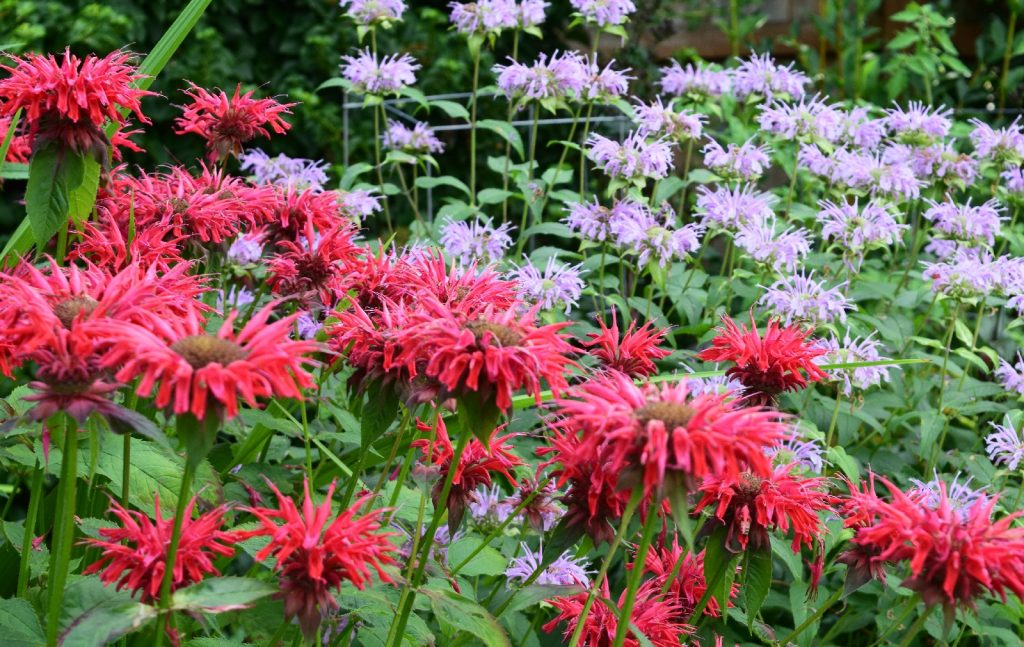
Plants to avoid growing with chamomile
Chamomile is a safe and beneficial herb to grow with sensitive species providing you keep it in close check – but there are some specimens, such as the below, you should avoid partnering with chamomile, period.
Mint
There’s some disagreement over how detrimental a chamomile-mint partnership can be – but the risks outweigh the benefits. Chamomile oil can overpower the natural scent and flavor of common mint species and may even restrict the plant from producing its own oil.
Additionally, mint can be highly invasive – meaning it’s likely to try and out-compete your chamomile. Mint and chamomile don’t work together effectively to deter pests, either.
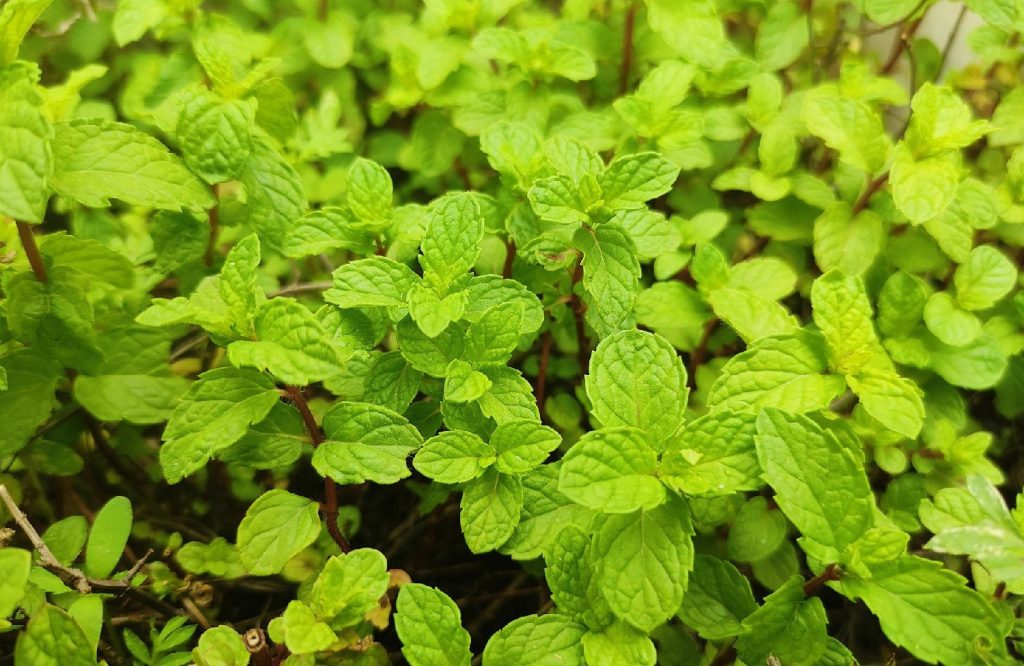
Carrots
Planting carrots and chamomile together can produce some benefits, but the main issue with this partnership is that both crops are likely to attract the same pests. Chamomile is one of the strongest protectors in any herb or vegetable garden, but it doesn’t provide enough benefits to warrant pairing with most carrot species.
Chamomile can also overrun and overwhelm sensitive carrots if left to grow carelessly – and it won’t stop rabbits from getting at your crops, either.
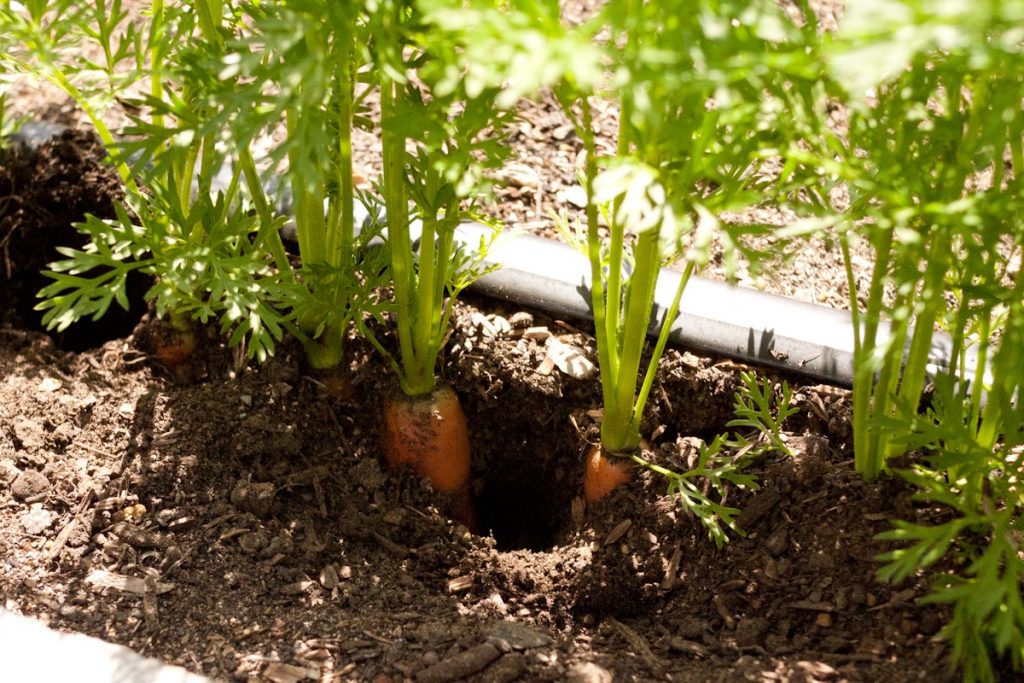
Is it really worth growing chamomile with companion plants?
Chamomile’s protective tendencies make it a must-grow if you want to safeguard vegetables and herbs against hungry insects and degenerative diseases. Its ability to ward off pests, attract helpful predators, and improve soil nutrition makes it an impressive triple threat!
Very few plants won’t benefit from chamomile protection, but it’s always worth keeping a close eye on its growth. While not as pervasive as some plants, such as dill or mint, chamomile will still grow leggy and proliferate wildly if not divided at least twice a year.
Paired with other defensive herbs such as basil and dill can lead to tastier crops and protective perimeters against common garden nuisances. What’s more, chamomile tea makes for a tasty, soothing drink that could help stave off your own illnesses. Why not start pairing chamomile with a few more sensitive plants and watch them grow?

Question: If chamomile improves the flavour of garlic does the garlic affect the flavour of the chamomile when planted alongside it?
Hi Ann,
That’s a great question. From my experience, no! Chamomile isn’t heavily influenced or affected in taste when planted near garlic.
When discussing proximity of the chamomile to the other plants it does well with – what distance are we talking about? Right next to? One chamomile plant per x number of square feet? We’ve just built a horseshoe-shaped, above ground bed with the outside dimensions of 16×16. How/where do you recommend the chamomile be placed? TIA!
Hi Michele,
Typically you want to place any companion plants roughly 12 inches apart so each plant has enough room to spread its roots.